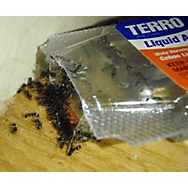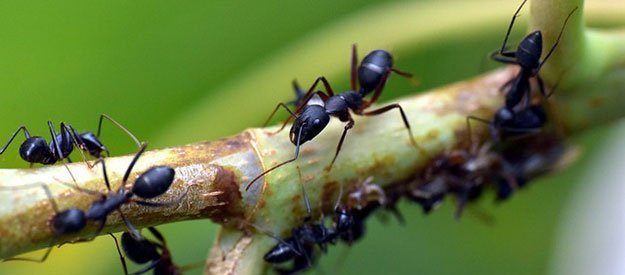It typically takes 1 to 2 days for ant treatment to show initial results. Full effectiveness may take up to a few weeks, depending on the severity of the infestation and the treatment method.
Dealing with ants in your home or business can be a stressful ordeal. Ants are not only a nuisance, but they can also pose health risks and cause damage to structures. Effective ant treatment often requires a strategic approach, utilizing baits, sprays, or professional extermination services.
These treatments disrupt the ants’ patterns and attack their colonies, which can be extensive and hidden away from plain sight. Ensuring the success of an ant treatment involves patience, as it takes time for the ants to ingest and share the treatment with their colony.
The process of eliminating an entire ant infestation is gradual, as the treatment spreads through the ant population and reaches the queen, ultimately leading to the colony’s collapse. Navigating through the phases of ant treatment can vary, but understanding the timeline is crucial in setting realistic expectations for a pest-free environment.
Factors Influencing Ant Treatment Efficacy
Finding the right strategy for ant control is crucial. But results vary due to several factors. Below is a breakdown of what affects treatment time and effectiveness.
Type Of Ant Infestation
Identifying the ant species is the first step to successful elimination. Some species, like odorous house ants, respond quickly to baits while others, such as carpenter ants, require more in-depth treatment. A professional exterminator can help identify the ant type and choose the most effective strategy.
Choice Of Ant Control Method
The treatment method can significantly impact how fast and well the ants are controlled. Bait stations may take several days to work as ants carry poison back to the colony. In contrast, direct treatments, like sprays, give immediate results but may not reach the queen ant to prevent future infestations.
Environmental Conditions
Environmental factors play a key role in treatment success. Moisture, temperature, and cleanliness can all influence how well treatments work. Dry and clean environments tend to boost the effectiveness of treatments, while damp or dirty areas may require additional steps for success.

Credit: www.terro.com
Immediate Actions Vs. Long-term Solutions
When ants invade your home, you want them gone—fast! Immediate actions and long-term solutions both play roles in ant treatment. Knowing when and how to apply each strategy is key to a bug-free home.
Quick Fixes: Pros And Cons
Immediate actions, or quick fixes, can provide rapid relief from an ant invasion. These include sprays, traps, and baits that act fast to reduce the ant population. But quick fixes have their limits. Let’s explore the pros and cons:
| Pros | Cons |
|---|---|
| Instant Relief | Limited Effect |
| Easy to Apply | Temporary Solution |
| Accessible | May Not Target Source |
While quick fixes might seem appealing, they often fail to eliminate the root cause of the ant problem.
Strategies For Lasting Ant Control
Long-term ant control requires a more strategic approach. This includes identifying and eliminating nests, sealing entry points, and maintaining cleanliness. Consider these lasting strategies:
- Identify the ant species.
- Use non-repellent insecticides.
- Seal entry points.
- Maintain clean surfaces.
- Employ professional pest control.
The time frame for these to take effect can vary from days to a few weeks. Persistence and patience are crucial.
Common Ant Treatment Methods And Their Timelines
When ants invade your home, it’s urgent to get rid of them fast. Different ant treatments work at various speeds. Your choice impacts how quickly you see results. Knowing the timelines helps you set expectations right.
Bait Stations: Patience For Results
Ant baits are a powerful tool to kill colonies over time. They are not instant killers.
- Workers take bait back to the nest
- Affects the colony in weeks
- Full results may take up to several weeks
Consistency is crucial with bait stations. Refill baits as needed for continued control.
Sprays And Powders: Speed And Application
Seek quick results? Sprays and powders act fast. They kill on contact.
- Instantly disrupts ant paths and nests
- Reapplication may be necessary
- Effect can diminish with time
Apply them to the right places. Read the label carefully for safe and effective use.
| Treatment Type | Action Time | Duration of Effectiveness |
|---|---|---|
| Bait Stations | A few days to weeks | Long-lasting (follow-up needed) |
| Sprays/Powders | Immediate | Short-term (reapplication needed) |
Choose the right ant treatment for your situation. Monitor the area and adjust tactics if needed.
Monitoring Progress Post-treatment
After implementing ant treatment strategies, vigilant monitoring becomes key to ensuring the pesky invaders don’t return. Understanding how to track progress can make the difference between a one-time treatment and ongoing battles. Let’s explore the signs that indicate successful eradication and discuss the timing for potential reapplication.
Signs Of Treatment Success
Spotting the right indicators of treatment effectiveness is crucial. Look for these clear signs:
- Decrease in ant sightings: Seeing fewer ants is the first victory sign.
- No new mounds: Check for absence of fresh ant hills in your yard.
- Lessened activity: Ant paths should be less visible or non-existent.
| Before Treatment | After Treatment |
|---|---|
| Daily Ant Sightings | Sporadic to No Sightings |
| New Ant Mounds | No New Mounds |
| Active Trails | Disrupted Trails |
Record these changes weekly. Use a notebook or digital tracker for accuracy. Note dates, times, and observations.
When To Consider Reapplication
Sometimes, a single treatment might not suffice. Consider reapplication if you notice:
- Persistent sightings: If ants keep popping up, another round may be needed.
- New activity zones: Finding new areas of ant activity signals reapplication.
- Weather changes: Heavy rain can necessitate another treatment.
Wait at least one week after the initial treatment. This time allows you to determine if the ants are truly gone. If issues persist beyond this period, consult a professional to discuss reapplication.
Preventing Future Infestations
Treating an ant infestation brings relief, but the true victory lies in making sure they don’t come back. You’ll need to take some preventative steps to safeguard your home against these persistent invaders. Let’s explore some proven strategies to maintain a fortress free from ants.
Routine Maintenance Tips
Stay vigilant with routine checks. Regular inspection of your home’s interior and exterior can prevent new colonies. Focus on common entry points such as windows, doors, and cracks in the walls.
Keep it clean. A spotless kitchen is your first line of defense. Wipe down surfaces and sweep floors daily to remove crumbs and spills.
- Seal food in airtight containers.
- Take out the trash regularly.
- Fix leaky pipes and faucets to eliminate water sources.
Mend the cracks. Seal any cracks or crevices in your home’s foundation, walls, or around windows and doors with durable caulk.
Natural Ant Repellants And Deterrents
Going natural can be just as effective. Here’s how to discourage ants from making your home theirs.
Use essential oils. Oils like peppermint, tea tree, and lemon have ant-repellent properties. Apply a few drops around entry points or make a natural spray by mixing with water.
| Essential Oil | Suggested Usage |
|---|---|
| Peppermint Oil | Put on cotton balls, place near entry points. |
| Tea Tree Oil | Apply diluted on surfaces ants frequent. |
| Lemon Oil | Add to water, spray around the house. |
Consider diatomaceous earth. This natural powder kills ants without harming pets or children. Sprinkle around the home’s perimeter and ant paths.
Plant deterrents. Grow ant-repelling plants like peppermint, lavender, and lemon balm in your garden or near entryways.

Credit: m.youtube.com
Frequently Asked Questions On How Long Does It Take For Ant Treatment To Work?
How Long Does It Take For Ants To Go Away After Treatment?
Ants typically disappear 1 to 2 days after professional treatment. Some infestations may require up to two weeks to fully resolve.
How Do I Know If My Ant Killer Is Working?
You’ll know your ant killer is effective when you observe a significant reduction in ant activity and fewer live ants around treated areas typically within a few days.
How Long Does Ant Killer Take To Work?
Ant killer effectiveness varies; contact sprays kill on contact, while baits may require several days to eliminate colonies.
Are Ants Still Around After Exterminator?
Ants may persist for a short period after an exterminator visit. Usually, they diminish over a few days as treatment takes effect.
Conclusion
Ant treatments vary in time to take effect, often from a few days to several weeks. Effective management depends on the method and infestation severity. For best results, combine professional services with preventive measures. Patience is key; eradicate ants and reclaim your space with confidence.

I’m MD Tanvir, and I bring years of expertise gained from working closely with pest control companies to the forefront. My journey in the industry has inspired me to launch Bug Battler, a platform aimed at equipping people with the know-how to combat pests autonomously. Through Bug Battler, I aim to empower individuals with practical insights to tackle pest infestations effectively.

